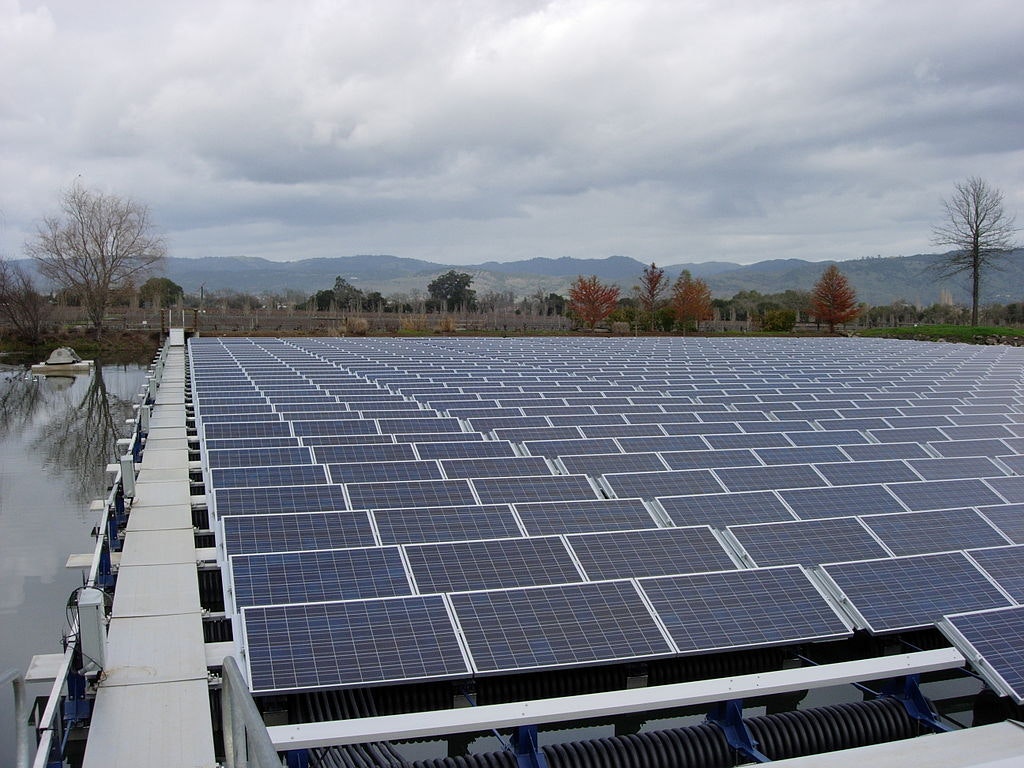Floating Community Solar Opportunity and Grant Application

In the spring of 2020, the Oregon Clean Power Cooperative (OCPC) reached out to discuss the opportunities and considerations of installing a floating community solar project on the re-regulation reservoir located next to the district’s office.
Similarly installed projects in other locations have shown a number of potential benefits.
· Depending on the location and climate conditions, floating solar projects are estimated to reduce reservoir evaporation rates by 10%.
· Floating solar may also inhibit the growth of algae and other aquatic plants below the panels.
Further, as an Oregon Community Solar Program project, the energy generated by the system could benefit both the district and our water users. Under the program’s rules, 40% of the energy would be made available to MID, 50% would be made available to offset the residential use of individual district irrigators, and 10% would be reserved for low-income Oregonians. Depending on the amount of grants or other outside funding that is able to be brought to the project, the district and individuals that subscribed to the project would see an immediate reduction in energy costs with no out-of-pocket expense.
The project would be both the first floating solar installation in Oregon and the first Community Solar Project in the state directly targeted to support agriculture.
The board felt these potential benefits made a project worthy of additional consideration.
Farmers Conservation Alliance (FCA) worked with OCPC to further review the project and provided funding to support an early-stage interconnection study with Pacific Power to determine if the utility’s electrical grid could support a project at that location. The interconnection study indicated a project could likely go forward successfully, but further financial feasibility analysis showed that the project had costs that – at the time – were not easily offset by available grants.
Over the last two years, grant funding opportunities expanded and the project is now moving forward with further development activities.
In March of this year, FCA and OCPC developed an application for a Congressionally Directed Spending request in support of the project. This is the same type of funding request that was used to raise $5 million in support of the first phase of the Joint System Canal Piping Project. Now FCA and OCPC are drafting a grant application to the new Oregon Department of Energy Community Renewable Energy Program.
As proposed, the system would be a 867-kilowatt photovoltaic array, resting on UV-stabilized High-Density Polyethylene (food-grade plastic) floats. The panels would be tethered to the bottom and/or sides, rising and falling like a floating dock, and would take up approximately two acres of the reservoir. The system would be expected to produce up to 1,370,000 kWh per year, with energy generated by the array appearing as a credit on subscribers’ electricity bills, lowering the costs paid to the utility for energy.
Long-term monitoring will evaluate the amount of water conserved from avoided evaporation and the ability of the project to reduce the growth of algae and aquatic weeds that foul the water supply, with results shared to contribute to the advancement of similar future projects.
Additional details on the project will be shared as development moves forward.

